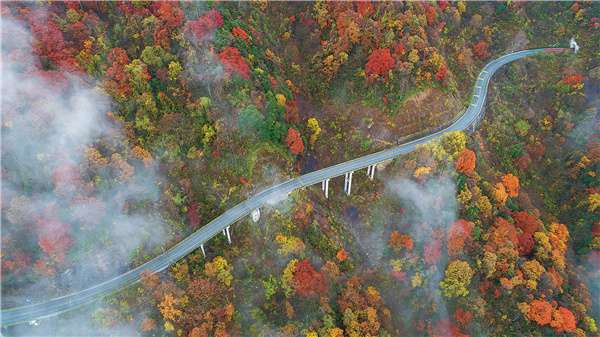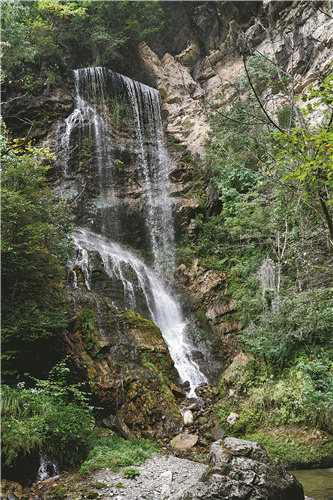
Shennongjia is said to be the place where the Emperor Yan once lived. Some visitors hope that they may even encounter the legendary yeren ("wild man"), China's equivalent of Bigfoot, in the remote mountains and virgin forests.
They do not actually see any "wild man", but they're attracted by Shennongjia's vibrant ecology, rich biodiversity and karst landforms.
Shennongjia's beauty varies over the year as nature takes its course. Tourists can enjoy flower blossoms in spring, be shaded from the summer heat, appreciate red leaves in autumn and go skiing in winter.
In 2016, China announced its ambitious plan of building 10 pilot national parks for ecosystem preservation, including in Shennongjia Forestry District, Central China's Hubei province.
Official data showed that tourist visits to Shennongjia Forestry District reached more than 15.5 million last year. By 2025, the forest area aims to increase that annual figure to over 30 million, with tourism revenue of more than 10 billion yuan ($1.57 billion).
Visitors can avail of a bus service if they do not drive. The journey to Shennongjia will take up to five hours from nearby Yichang and Shiyan cities. By July, it's estimated that Shennongjia will be connected to a newly built high-speed railway, making the mountainous region more accessible.
Between Nov 1 and Dec 31, tourists can buy a package ticket of the six major scenic areas in Shennongjia for 99 yuan, about 40 percent of the original price. The separate ticket of these scenic spots is half of the regular price.
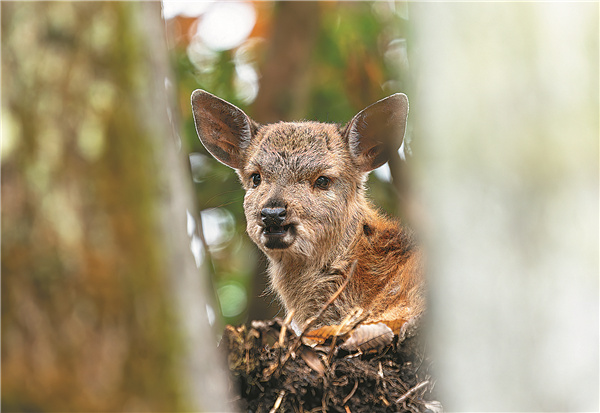
Beauty and biodiversity
Most tourists stay in Muyu town, and drive, either their own vehicles or charter a car with a driver, to scenic areas scattered all around on a two or three-day package.
Trips, in such a mountainous region, are of course dependent on the weather.
If you're fortunate enough, an early rise may be rewarded with a stunning view of a sea of clouds beneath.
The natural beauty of karst landforms is ubiquitous.
There are waterfalls, pools and a 17-meter-high arch "bridge" crafted by nature after years of rain erosion.
You can hike in a forest, climb a mountain and explore a large, dark cave to listen to the sounds of swallows nestling. Don't be alarmed when dripping water splashes on your head.
The locals also store home-brewed wines in a small cave, which is decorated with colorful lights.
Tourists will bump into a "hospital" to see the golden snub-nosed monkeys, who like to climb and play games with each other. Those who're ill or injured will stay there for treatment and go back to the forest once recovered.
Guanmenshan Scenic Area showcases rich biodiversity, with a natural ecology museum, a garden with precious plants and areas that raise different animals such as deer and giant salamander.
Walking in a zigzag wooden plank road in the forest, you will learn about different bird species on small exhibition boards, and observe fish in the ponds.
It's a perfect place to discover natural science, especially for, but not only, children.
In Dajiuhu National Wetland Park, when the wetlands are shrouded in mist early in the morning, it's like being in a wonderland with the reflections in the water and mountains and reed marshes on the backdrop.
For that fantastic view, you have to stay overnight in Qianping ancient town, and get up as early as 6 am to catch the first shuttle bus that will take you to explore the park's nine wetlands.
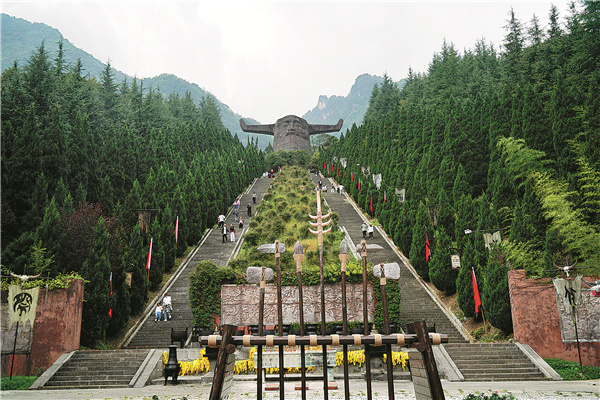
The origin of Chinese
We Chinese proclaim ourselves yan huang zi sun-the offspring of mythical Emperor Yan (Shennong) and Yellow Emperor.
Shennongjia was so named because it's said to be the place where Shennong tasted various herbs to figure out how to use them to cure sickness.
Shennong, who has a human body and ox head, taught different techniques-he invented farm tools and discovered tinder and tea, and he made cooking utensils out of pottery.
In Shennong Altar Scenic Area, a long stone ladder leads to a 21-meter-high stone sculpture of Shennong's head-with two ox horns, he closes his eyes with his chin up, as if he's lost in thought.
Tourists couldn't help gazing in awe at the stone head while they're climbing and looking up. They can also appreciate murals depicting Shennong's legend, with a row of traditional Chinese sacrificial vessels putting aside.
Gaining fame due to the legend of 'wild man'
Shennongjia is a household name in China because it's home of the legendary "wild man". Its folk tale spans the generations.
Similar legends can be found all over the globe, ranging from the Bigfoot in the North America and the Yeti in the Himalayan mountains.
Between 1976 and 1981, the Chinese Academy of Sciences organized three large-scale scientific investigations-anthropologists, zoologists and botanists were sent to the region's thick forest.
Scientists have collected hair, footprints and excrement suspected of belonging to a "wild man", but some experts argue that most were the result of bears, monkeys or even human beings.
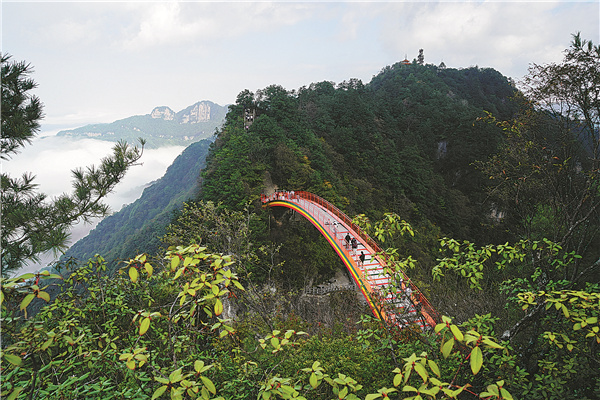
They failed to uncover the myth of "wild man", but discovered the area's rich biodiversity. During the second mission in 1977, the golden snub-nosed monkey was first spotted in Shennongjia.
Although several hundred people claimed themselves as eyewitnesses of some giant apelike creatures in Shennongjia since the early 20th century, there is no tangible evidence to date to confirm the existence of a "wild man".
In the 1990s, speculation about such a creature reached a climax, boosting tourism. In 1999, the Chinese authorities announced that Shennongjia has no "wild man".
The latest reporting in Shennongjia was in 2007. A local couple and their child and two tourists alleged that they bumped into two apelike creatures when they were in a car.
Nowadays, Shennongjia's mythical appeal is more about its flora and fauna.
The "wild man" legend has been passed on for generations by word-of-mouth. In 2016, the legend of "wild man" in Shennongjia was added to Hubei province's intangible cultural heritage list.
Today, tourists can visit Wild Man Cave, where eyewitnesses claimed that they spotted the creatures, and see "wild man" sculptures.
